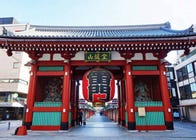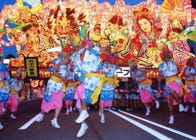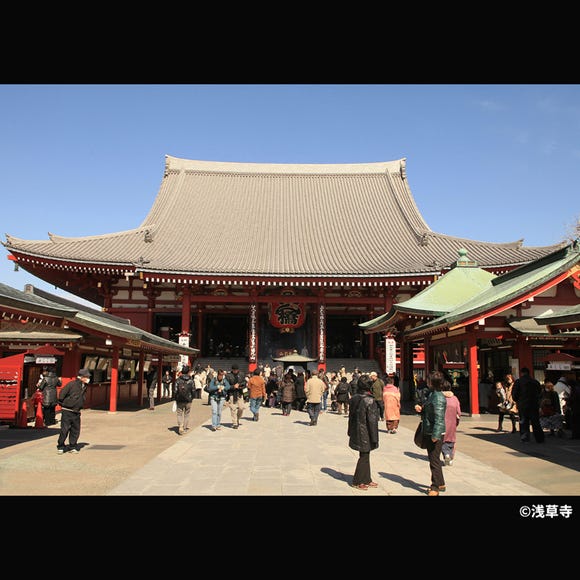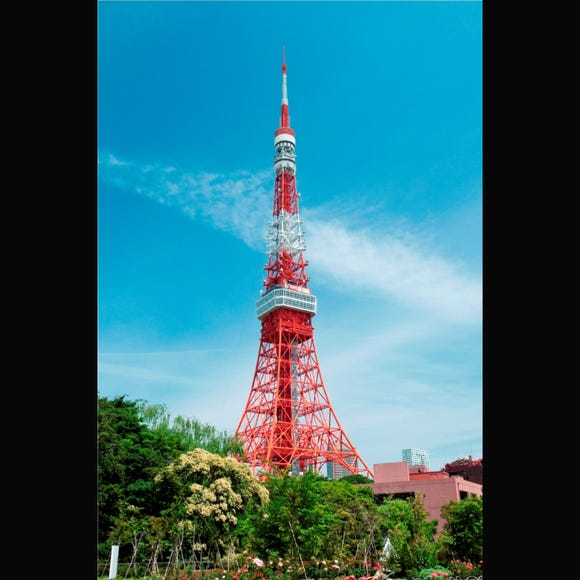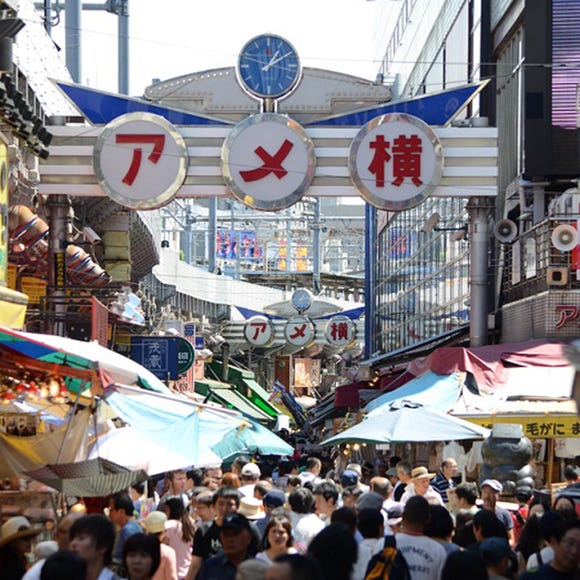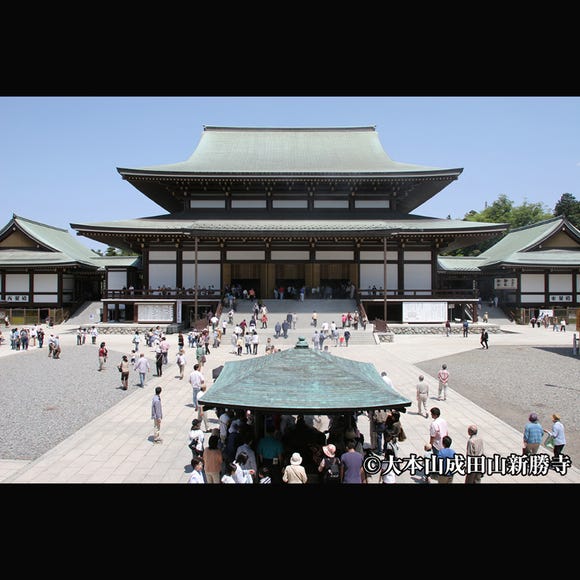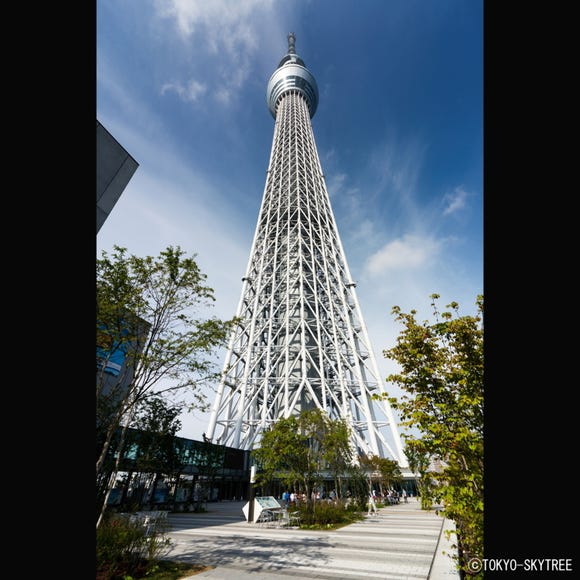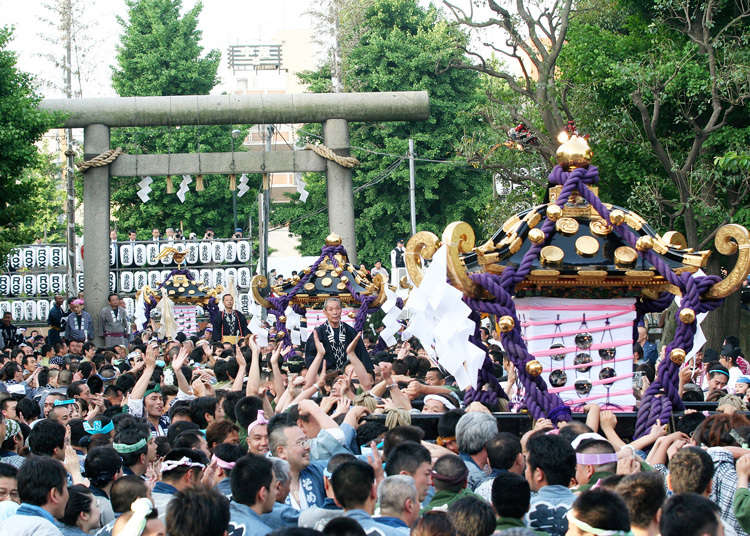
Sanja Matsuri is a 3-day Japanese festival held in late May that attracts over 1.8 million visitors. Held in Tokyo's Asakusa neighborhood, the activities center around popular tourist attractions Asakusa Shrine and Sensō-ji Temple.
The entire town whips into a festive fervor during this time as representatives parade about 100 mikoshi (portable shrines) through the streets and show them off to spectators.
The sheer scale and energy of the event have captivated the hearts and minds of many people. Many visitors make special arrangements to visit again and again to take part each year.
But what exactly is the Sanja Matsuri, and what are some of its must-see sights and activities? We asked a few long-term foreign residents in the area for their recommendations.
Main image photo credit: Asakusa Shrine
2024 Sanja Matsuri Schedule & Events
- May 17: Mikoshi and children's mikoshi events in each neighborhood
- May 18: Reitaisai, Daigyouretsu
- May 19: Honsha Mikoshi Kakucho Togyo (Shrine Omikoshi Town Procession) (*Schedule and particulars are subject to change.)
What is the Sanja Matsuri?
Sanja Matsuri, which translates to Three Shrines Festival, is actually the shortened version of the festival's official name, Asakusa Jinja Reitaisai - the Reitaisai being the most important ceremonial celebration of a shrine. For Asakusa Shrine, this event is held on the third weekend (Friday, Saturday, and Sunday) of May every year.
The festival began near the end of the Kamakura period and was formerly a funatogyo (boat procession) where people would place omikoshi on boats floating on the sea. This kept evolving over the generations until its current iteration of holding an omikoshi parade along the streets instead.
Origins of the Sanja Matsuri, Asakusa Shrine, and Sensō-ji
The festival takes place in Asakusa Shrine, a Shinto shrine located next to Sensō-ji, a Buddhist temple.
In the minds of many Japanese, there is often a syncretistic fusion of Japan's native Shintoism with Buddhism, a religion overseas that was introduced into the country later. Having shrines and temples at locations near each other is, therefore, not an uncommon sight here. The extremely close proximity of Asakusa Shrine and Sensō-ji, however, is something quite unusual!
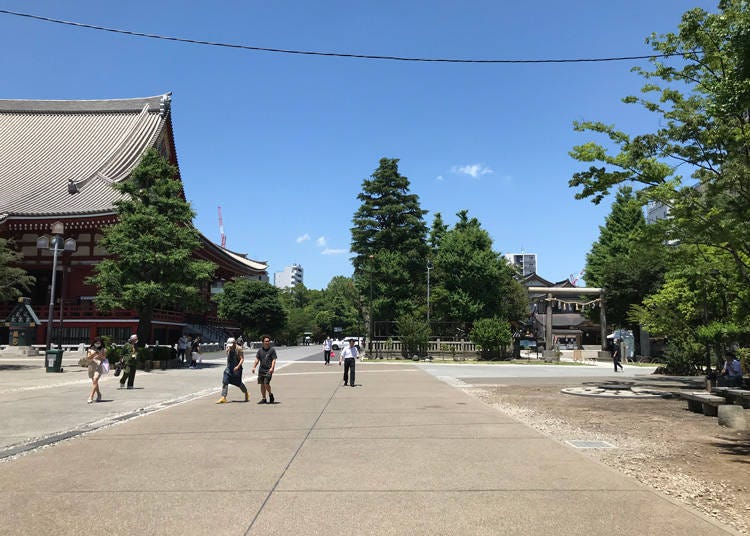
To find out why they're located so near each other, we'll have to go back in time a little, to the time of the shrine and temple's establishment. Let's start with Sensō-ji, which traces its history all the way back to the 7th century.
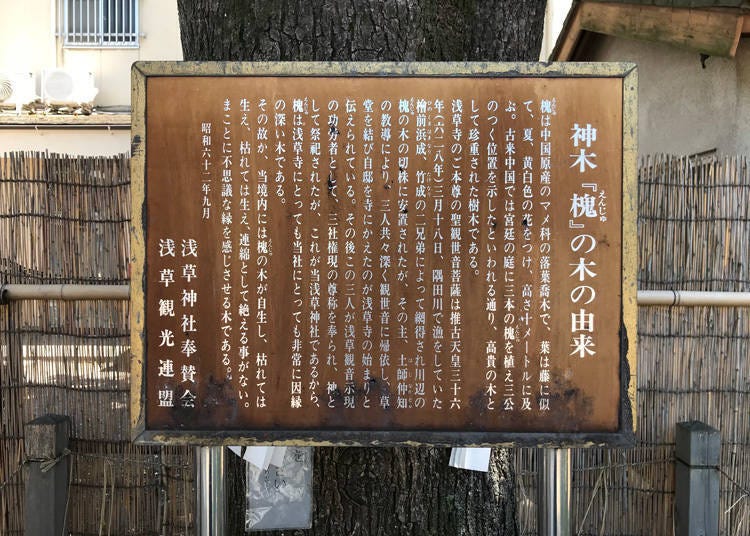
The story began with the fishermen brothers Hinokuma-no-Hamanari and Takenori. They had been trying to catch fish by the Sumida River to no avail. Instead, their nets kept hauling up a Buddha statue.
Mystified, the brothers showed the icon to Haji-no-Matsuchi, a highly-educated person of the time, who identified it as a statue of Grateful Kannon.
The brothers made a wish to the statue for their fishing business to go well, and ever since then, would always haul in bumper catches. Upon seeing that, Haji-no-Matsuchi decided to enshrine the Kannon statue in his own house, and that was how Sensō-ji came to be.
After that, Haji-no-Matsuchi's children received an oracle to deify Haji-no-Matsuchi, Hinokuma-no-Hamanari, and Takenori. Thus, they built Asakusa Shrine to enshrine the three new gods, who came to be known as Sanja-sama (three noble shrines). This later became used as Sanja Festival's name as well.
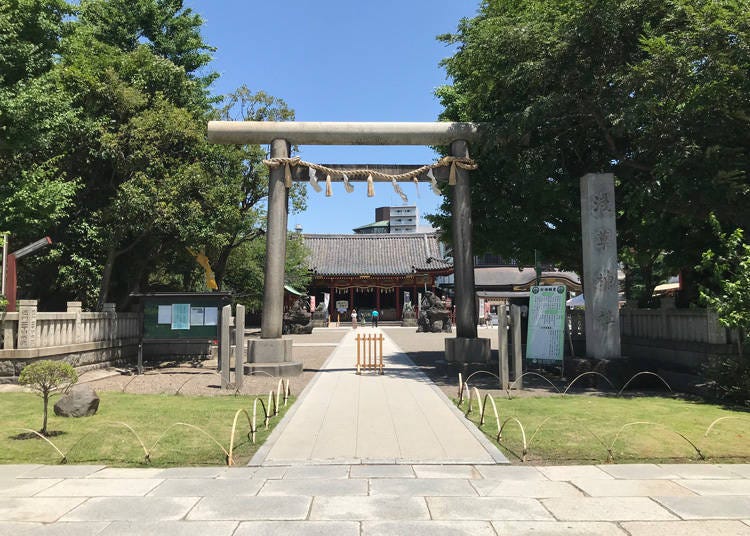
How to get to the Sanja Matsuri
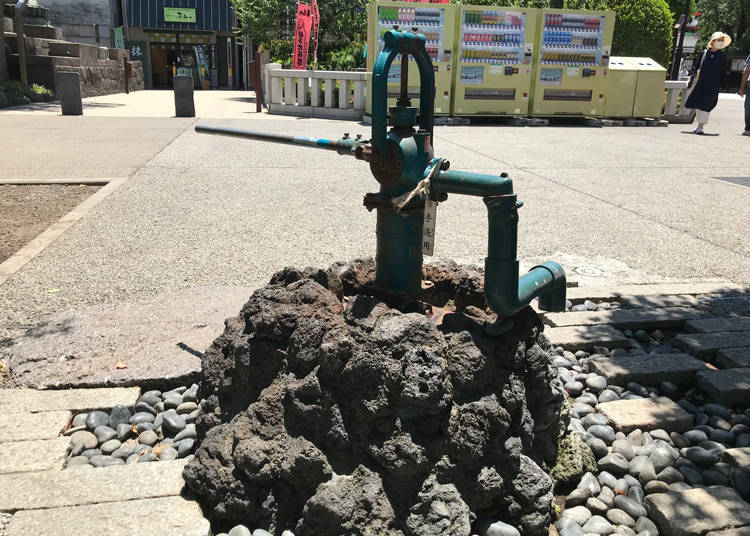
The closest station is Asakusa Station on both the Ginza and Asakusa lines, however, these will also be absolutely jam-packed during the festival.
Where possible consider other stations which are within walking distance like Asakusa Station (on the Tsukuba Express line), Honjo-Azumabashi Station (on the Toei Asakusa Line), Kuramae Station (on the Toei Asakusa Line) or Tawaramachi Station (on the Tokyo Metro Ginza line).
The Sanja Matsuri will be held over an extensive area, and there are many exciting spots to look out for. Still, the best way to start this journey would be to make your way to Asakusa Shrine first.
Asakusa Shrine is a 7-minute walk from Asakusa Station on the Tobu Line, Toei Asakusa Line, and Tokyo Metro Ginza Line. It's also about a 10-minute walk from Asakusa Station on the Tsukuba Express.
The road leading from the station to the shrine has preserved its traditional town appearance, and you'll pass by the famous Kaminarimon gate as well.
Must-see highlights and events of the Sanja Matsuri
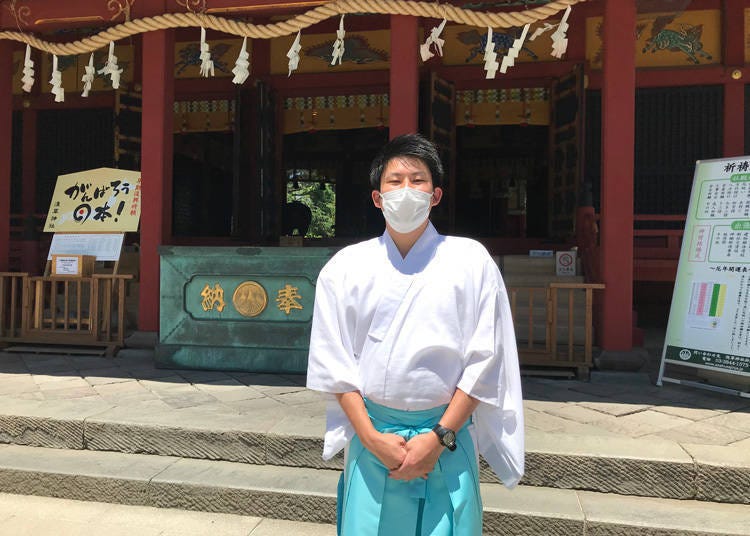
The Sanja Matsuri takes place over three days, and each day features different activities. First-time spectators would naturally wonder what the must-see events are and when the best time to visit is, and that's where we come in! We'll share some great ways to enjoy Sanja Matsuri from Asakusa Shrine.
Highlight 1: Experience a Shinto Ritual at the Reitaisai Ceremony
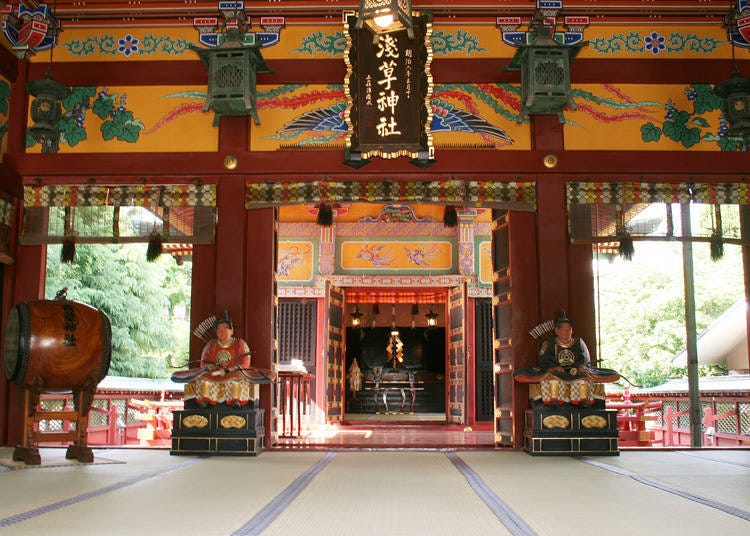
Most people associate Sanja Matsuri with its parade of portable shrines, but the main highlight of the festival was originally the rituals that took place in the shrine.
On the morning of the second day, the Reitaisai ceremony will be held in the shrine building. This event allows you to observe an important Shinto ritual that's rarely held these days up close!
If you're hoping to fully immerse yourself in Japanese culture, you'll want to attend this uniquely Japanese ceremony.
Highlight 2: Get psyched for the festival at the omikoshi parade starting point
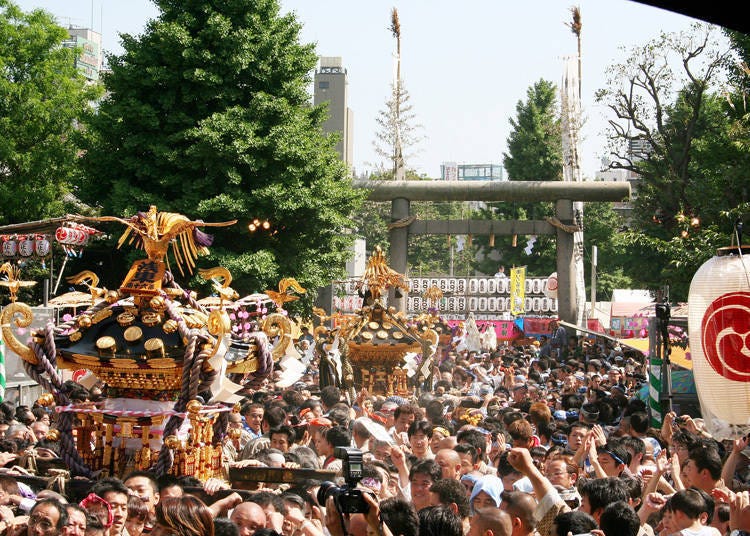
During the Chonai Mikoshi Rengo Togyo (Town Omikoshi Alliance Procession) event at noon on the second day, head over to the starting point of the omikoshi parade to see how the portable shrines embark on their journeys.
Two types of omikoshi will be carried around during the festival: Honsha Mikoshi (Shrine Omikoshi) and Chonai Mikoshi (Town Omikoshi). And there are about 100 Chonai Mikoshi in all!
When the name of a particular town community is called, the representatives shoulder their omikoshi and, after each omikoshi is ritually purified, set off through the shrine's torii gate to parade the portable shrine around through roads and alleys before making their way back to their own neighborhood.
During this time, a tamafuri (soul swaying) ritual is performed for the god dwelling in the omikoshi at the same time. This ritual is where the omikoshi is deliberately rocked and shaken roughly while being carried around.
At the parade's starting point, bearers of the omikoshi will be at their freshest and most energetic, so the swinging and swaying of the omikoshi is proportionately at its most vigorous. It's one of the most exciting sights of the festival, and you don't want to miss it! This is also the only time where you'll be able to see all the omikoshi in town in one place.
Highlight 3: Catching sight of the Kaminarimon gate and omikoshi together
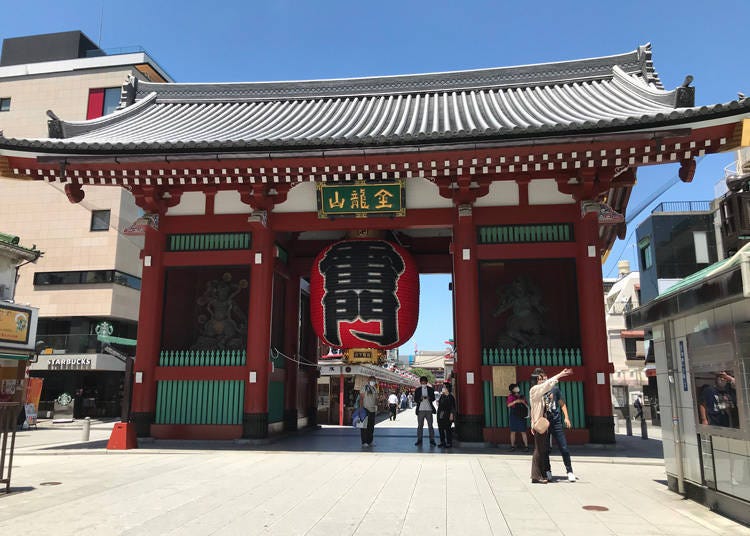
If you've been to Asakusa before, you've probably also been to the Kaminarimon gate. It is, after all, the symbol of Asakusa.
The omikoshi procession that sets off from Asakusa Shrine during the Chonai Mikoshi Rengo Togyo event will pass through Nakamise Street and emerge from the iconic Kaminarimon, allowing spectators a chance to snap photos of both the gate and the portable shrine parade at the same time.
Nothing says, "I attended the Sanja Matsuri!" quite like either one of them, and having them both in the same shot makes the photo that much more convincing! However, because almost everyone who visits has the same idea, if you're determined to take this photo, be mentally and physically prepared for crowds the likes of which you've never seen before.
Recommendation 4: Chasing the parading omikoshi through the alleyways!
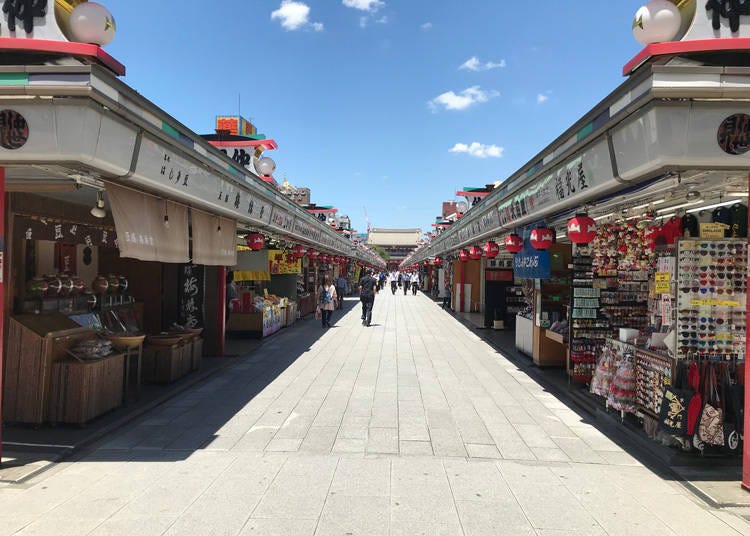
On day three, the festival's final day, an event called Honsha Mikoshi Kakucho Togyo (Shrine Omikoshi Town Procession) will take place in the early morning. Three omikoshi of the main shrine itself will be transported along a fixed course along Asakusa's streets and alleys.
The routes these omikoshi will be taking are put up on the shrine's official website before the event, so you'll be able to roughly gauge which omikoshi will pass by which spot in Asakusa at what time. Looking up the routes beforehand lets you find the perfect place to hang out while waiting to catch a glimpse of the omikoshi as they pass by!
The event starts in the morning and continues all the way into the night, so after watching the procession pass by at one spot, you can move right on to another place to keep observing the festivities.
If you're the type who finds satisfaction in being able to plan your every move and then keeping up with them, using the information on hand to find the best routes and check out places to visit while pursuing the omikoshi may be an activity that appeals to you!
Advice & views: Sanja Matsuri, according to foreign residents
Many non-Japanese travelers are fans of the Sanja Matsuri. From the viewpoint of a foreigner who is residing in Japan, what exactly is it about the festival that captivates the international crowd?
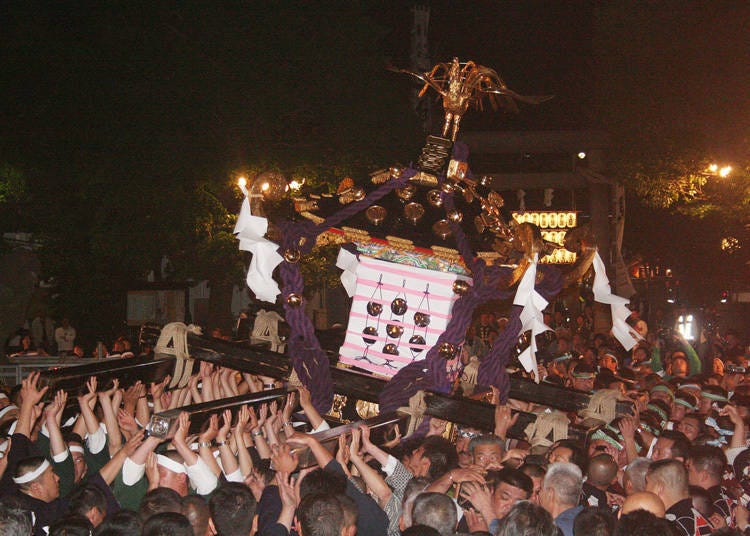
According to an Australian man: "There are different things to see every day, so all three days of the festival are delightful. My recommendation is the climax of the festival on the last day. Japanese people are known to be calm and polite, so when I first saw the fierce way they handled the omikoshi, it quite frankly scared me a little. It's something worth watching! Each neighborhood community has its own set of matching costumes as well. It was fun paying attention to that too!"
Locally, many people take leave from work during the three days of the festivals, or before and after it, so that they can entirely focus on taking part in the activities. On the last day, when the festival reaches its climax, everyone is hyped up, and the energy level put into every activity then is a sight to behold.
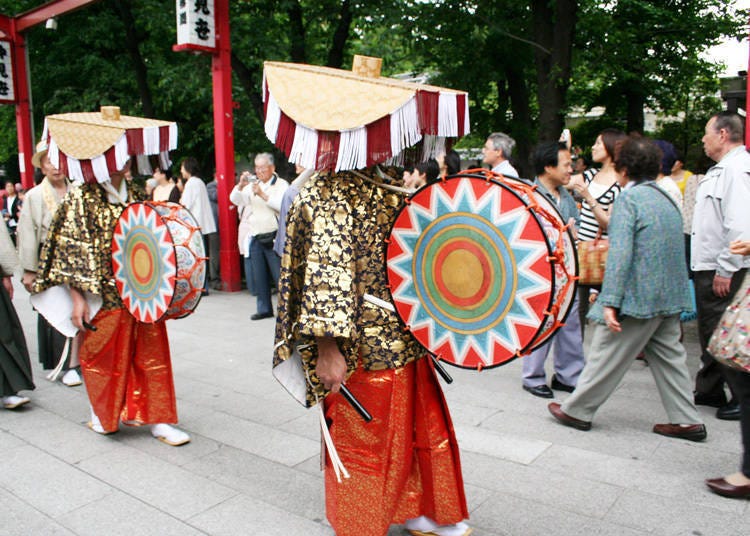
An American woman explains, "There's this event, Daigyoretsu (large procession), where people in all sorts of costumes parade through the streets while festival music and dancing takes place everywhere. Just watching everything go on is already so fun! The Sanja Matsuri is well-known for its omikoshi parade, and seeing all the portable shrines gathered in one place is quite an overwhelming feeling as well. There are plenty of booths selling food and souvenirs during the festival, so I personally recommend taking lots of breaks in between as you go around taking in the sights."
Daigyoretsu is an event that takes place in the afternoon of the first day. As mentioned, people in colorful ancient Japanese costumes from all time periods parade through the streets, and festival music and dances will be performed as well. You can definitely understand why our friend from America would say just watching everything go on is already fun enough!
Things first-time visitors should know about Sanja Matsuri
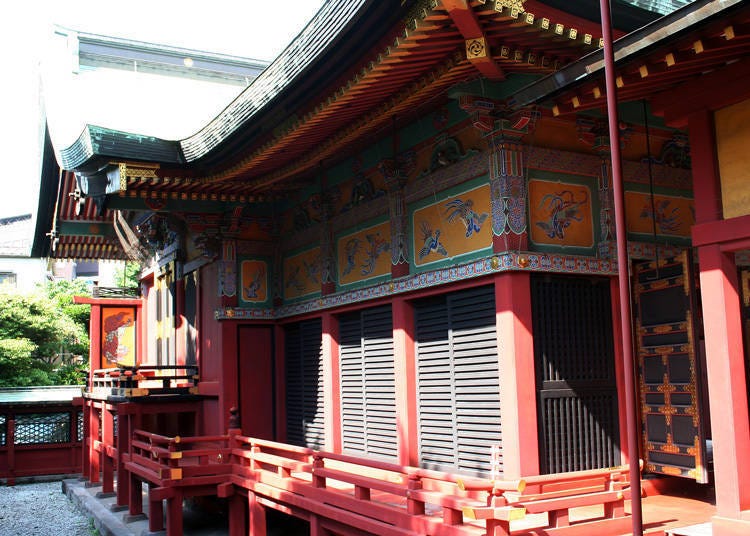
If you're convinced that Sanja Matsuri is where you want to be, then please take note of a few things when you do actually get there.
1. Expect huge crowds. This can’t be stressed enough: As one of Tokyo’s most popular festivals, you will see a constant stream of people coming into and leaving the Asakusa area.
2. Expect lines for toilets. In Asakusa Shrine, there are no toilet facilities available for ordinary visitors, so if you do need one, you'll have to use one of the public toilets nearby. Also, note that most of the convenience stores near the venue won't be allowing the public to use their toilets during festival days, so it may be best to deliberately plan a lot of leeway into your schedule for bathroom breaks.
3. Plan for rain. While not the case every year, more often than not, there is a day of wetter weather. Bring rain gear and a portable umbrella just in case.
4. But also prepare for sun. If it’s not raining, the sun can be surprisingly strong at this time of year. After checking the weather report, bring along some sunscreen and a hat.
5. Be aware of your surroundings. The areas closest to the mikoshi routes will be quite crowded. While Japan is relatively safe from pickpockets, be smart about your belongings. Also, be aware of where the mikoshi – and the teams of people – are heading. Mind that many might be slightly tipsy and the crowds might change direction suddenly – be sure not to get squashed! Finally, this goes without saying, but do not block or otherwise hinder the omikoshi bearers as they're moving along.
6. Leave room in your tummy! There will be festival food galore, particularly in the area immediately around Sensoji Temple. Be sure to enjoy snacking on the many delights offered! It’s a fantastic time not only to enjoy a major Japanese festival but some of its truly amazing food culture as well.
7. Shrines and temples are holy places. Note that some areas are off-limits to ordinary visitors. These areas are clearly marked with Japanese and English signs, so please look out for them and respect the sanctity of these sanctuaries.
By keeping these points in mind, you'll make the festival more enjoyable for yourself and those around you!
-
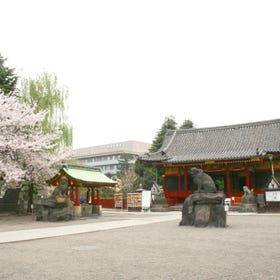
-
Address
2-3-1, Asakusa, Taitou-ku, Tokyo, 111-0032
View Map -
Nearest Station
Asakusa Station (Tokyo Metro Ginza Line / Toei Asakusa Line / Tobu Isesaki Line (Tobu Sky Tree Line) / Tsukuba Express)
7 minutes on foot
- Phone Number 03-3844-1575
-
Address
2-3-1, Asakusa, Taitou-ku, Tokyo, 111-0032
Written by Jiei Kurabayashi, Dali Corporation
*This article was originally published in July 2020 and updated in January 2024.
- Area
- Category
*Prices and options mentioned are subject to change.
*Unless stated otherwise, all prices include tax.
Limited time offer: 10% discount coupons available now!
Recommended places for you
-

Discover Osaka Station City: A Journey Through Its Most Fascinating Spots
-

12 Unique & Fun Tokyo Food Tours to Enjoy in 2024
-

Best Things to Do in Tokyo in April 2024: Events, Festivals & More
-

The CASIO S100: How CASIO's Masterpiece Calculator Redefines Business Elegance With Japan-Made Reliability
-

Where to Eat in Yokohama: 10 Must-Try Restaurants for Yakiniku, Izakayas, Unique Dining & More
-

15 Must-Try Sushi Restaurants in Tokyo (+5 Trending Areas to Explore for Foodies)
-
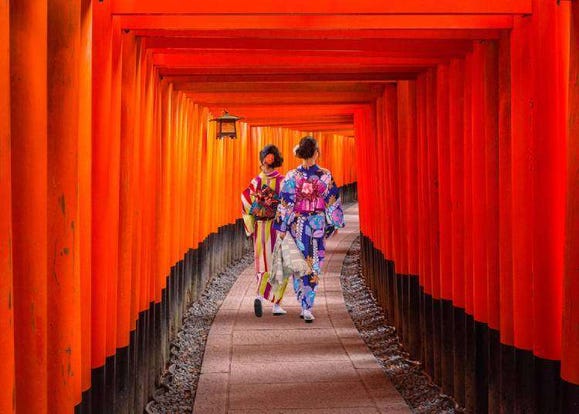
10 Major Cities in Japan: Which One Should Top Your Bucket List?
-
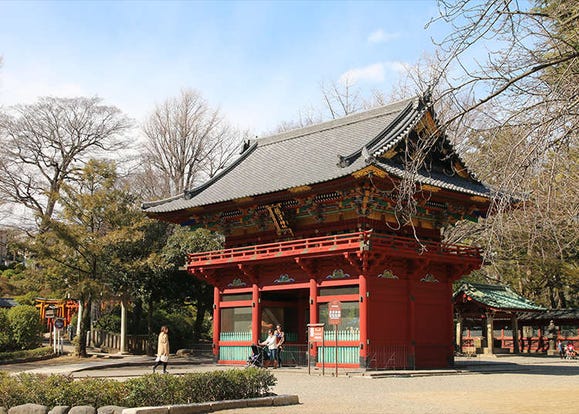
Guide to Tokyo's Old Quarter: 7 Quaint Spots in Yanesen!
-
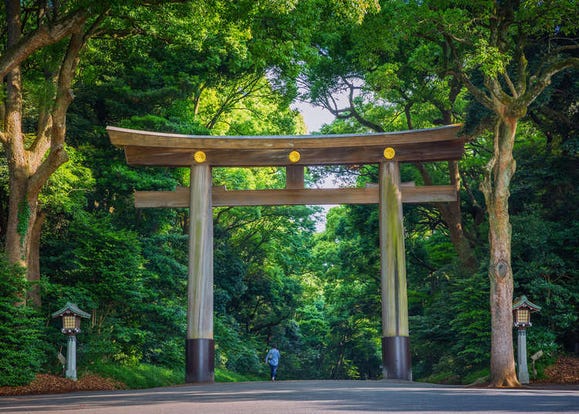
Meiji Shrine (Meiji Jingu): Exploring the Sacred Sanctuary of Peace in Bustling Tokyo
-

Traditional Japanese Summer Festivals in Tokyo
-

Sanja Matsuri: Inside Guide to One of Tokyo’s Most Famous Festivals
-

4 Best Tokyo Festivals in March: Fun Ways to Greet Spring
- #best ramen tokyo
- #what to buy in ameyoko
- #what to bring to japan
- #new years in tokyo
- #best izakaya shinjuku
- #things to do tokyo
- #japanese nail trends
- #what to do in odaiba
- #onsen tattoo friendly tokyo
- #daiso
- #best sushi ginza
- #japanese convenience store snacks
- #best yakiniku shibuya
- #japanese fashion culture
- #best japanese soft drinks

















